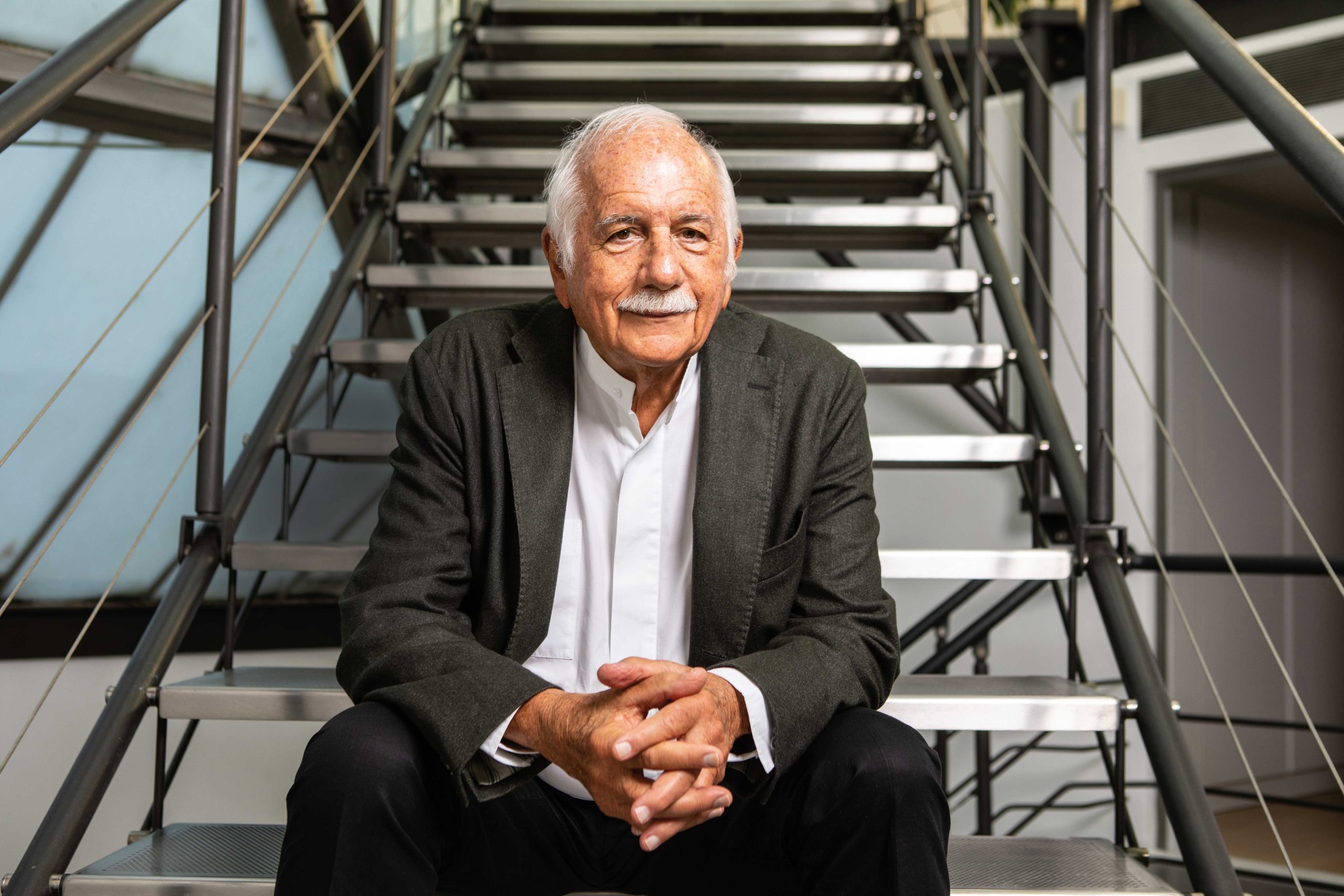Lifestyle
Moshe Safdie on Architecture’s Role in Community Building

Renowned architect Moshe Safdie recently discussed the intersection of architecture, Jewish aesthetics, and community development. His early work, Habitat 67, which emerged from his master’s thesis, set a high bar for architectural innovation. Over the past five decades, Safdie has designed a variety of notable structures, including the National Gallery of Canada in Ottawa and Marina Bay Sands in Singapore, showcasing his versatility and commitment to enhancing urban environments.
Architectural Impact on Polarized Societies
Safdie highlighted the significant role architects can play in fostering community cohesion, particularly in polarized regions. He pointed to the Mamilla district in Jerusalem, which he envisioned as a bridge connecting the old and new cities. This project, realized after more than 40 years, aims to facilitate interaction between Jewish and Palestinian communities. Safdie emphasized that while architects cannot create policies, they can design spaces that promote cohabitation and collaboration.
“Architects can create the physical setting to improve cohabitation, collaboration, and interaction,” he stated. “The architect is a player, but not the sole player.” His current work in Singapore reflects this philosophy, with mixed-race communities strategically integrated into new housing developments to prevent societal discord.
Reflecting on the success of Mamilla, Safdie noted its vibrant atmosphere, which attracts diverse groups, including Orthodox Jews, secular residents, and Arabs. “It’s a place where the public realm is mixed and cohabitated,” he said, emphasizing its role as a community mixer.
Aesthetics and the Jewish Community
Safdie also addressed the challenges of aesthetic expression within the Jewish community, referencing the views of theologian Michael Wyschogrod. Wyschogrod lamented the lack of individuality and taste in Jewish architecture, noting that many homes and synagogues lack character. This sentiment resonates with Safdie, who cited a general skepticism surrounding Jewish institutional projects within his firm.
“Can we transcend the taste level?” he asked, acknowledging that while some projects, like the Skirball Cultural Center in Los Angeles, stand out, many others do not meet these aesthetic aspirations. He expressed particular concern for synagogues, where functionality often overshadows design. “It’s not just about aesthetics; it’s about how space is used,” he remarked.
Furthermore, Safdie highlighted the cultural implications of architectural neglect in Israel’s Jewish Quarter, where poorly planned additions detract from the beauty of historical buildings. He criticized the lack of oversight and care in maintaining architectural integrity, arguing that a culture of pride and responsibility is essential for preserving community heritage.
Safdie’s experiences with diverse projects have reinforced his belief in the importance of light and communal spaces in architecture. He described how quality of light can elevate a building’s spirit, referencing his recent visit to the restored Notre-Dame in Paris as a prime example.
“The synagogue is first of all a matter of light,” he noted. “Light is an element by which we can have that sense of spiritual uplift.” He emphasized that the arrangement of key elements, such as the bimah and aron hakodesh, should foster community engagement.
Fostering Appreciation for Architecture
As an educator and mentor, Safdie believes in nurturing an appreciation for architecture from an early age. He expressed concern over the diminishing focus on the arts in Israeli schools, calling for a renewed emphasis on design and aesthetics in the curriculum.
“When the opportunity and the education and the exposure are there, there’s no lack of talent and appreciation,” he asserted, highlighting the contributions of Jewish architects in the broader context of global design.
Reflecting on his iconic design of Habitat 67, he acknowledged its communal aspects, noting that the development has evolved into a collective living environment with active resident engagement. “It is very much a communal place,” he said, illustrating the enduring impact of his work.
Safdie outlined the collaborative nature of the architectural process, emphasizing the importance of dialogue with clients. “No great building can occur without a great client,” he explained, noting that understanding the site and its context is vital to creating meaningful architecture.
As he continues to engage with architectural discourse, Safdie finds clarity and appreciation in his reflections. “You reach a certain level of security and self-appreciation about what you’ve achieved,” he said, acknowledging a more open perspective shaped by years of experience.
This conversation underscores the crucial role architecture plays in shaping communities, fostering interaction, and preserving cultural identity. Safdie’s insights not only highlight the power of design but also challenge society to embrace a more thoughtful approach to the built environment.
-

 Education2 months ago
Education2 months agoBrandon University’s Failed $5 Million Project Sparks Oversight Review
-

 Lifestyle3 months ago
Lifestyle3 months agoWinnipeg Celebrates Culinary Creativity During Le Burger Week 2025
-

 Science3 months ago
Science3 months agoMicrosoft Confirms U.S. Law Overrules Canadian Data Sovereignty
-

 Health3 months ago
Health3 months agoMontreal’s Groupe Marcelle Leads Canadian Cosmetic Industry Growth
-

 Science3 months ago
Science3 months agoTech Innovator Amandipp Singh Transforms Hiring for Disabled
-

 Technology3 months ago
Technology3 months agoDragon Ball: Sparking! Zero Launching on Switch and Switch 2 This November
-

 Education3 months ago
Education3 months agoRed River College Launches New Programs to Address Industry Needs
-

 Technology3 months ago
Technology3 months agoGoogle Pixel 10 Pro Fold Specs Unveiled Ahead of Launch
-

 Technology1 month ago
Technology1 month agoDiscord Faces Serious Security Breach Affecting Millions
-

 Business2 months ago
Business2 months agoRocket Lab Reports Strong Q2 2025 Revenue Growth and Future Plans
-

 Science3 months ago
Science3 months agoChina’s Wukong Spacesuit Sets New Standard for AI in Space
-

 Education3 months ago
Education3 months agoAlberta Teachers’ Strike: Potential Impacts on Students and Families
-

 Technology3 months ago
Technology3 months agoWorld of Warcraft Players Buzz Over 19-Quest Bee Challenge
-

 Business3 months ago
Business3 months agoNew Estimates Reveal ChatGPT-5 Energy Use Could Soar
-

 Business3 months ago
Business3 months agoDawson City Residents Rally Around Buy Canadian Movement
-

 Education3 months ago
Education3 months agoNew SĆIȺNEW̱ SṮEȽIṮḴEȽ Elementary Opens in Langford for 2025/2026 Year
-

 Technology1 month ago
Technology1 month agoHuawei MatePad 12X Redefines Tablet Experience for Professionals
-

 Technology3 months ago
Technology3 months agoFuture Entertainment Launches DDoD with Gameplay Trailer Showcase
-

 Business3 months ago
Business3 months agoBNA Brewing to Open New Bowling Alley in Downtown Penticton
-

 Technology3 months ago
Technology3 months agoGlobal Launch of Ragnarok M: Classic Set for September 3, 2025
-

 Technology3 months ago
Technology3 months agoInnovative 140W GaN Travel Adapter Combines Power and Convenience
-

 Science3 months ago
Science3 months agoXi Labs Innovates with New AI Operating System Set for 2025 Launch
-

 Technology3 months ago
Technology3 months agoNew IDR01 Smart Ring Offers Advanced Sports Tracking for $169
-

 Technology3 months ago
Technology3 months agoDiscover the Relaxing Charm of Tiny Bookshop: A Cozy Gaming Escape










